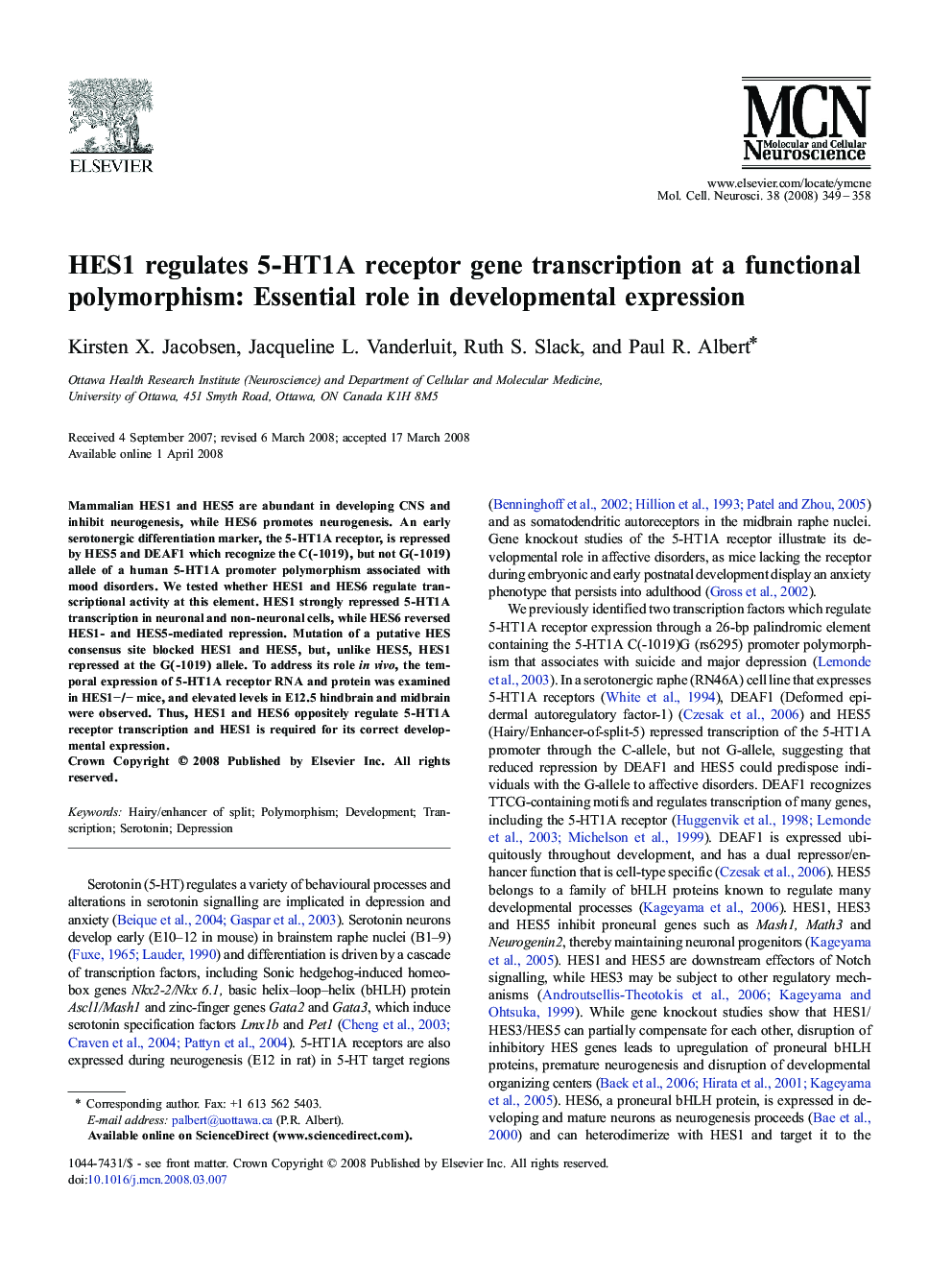| Article ID | Journal | Published Year | Pages | File Type |
|---|---|---|---|---|
| 2199041 | Molecular and Cellular Neuroscience | 2008 | 10 Pages |
Mammalian HES1 and HES5 are abundant in developing CNS and inhibit neurogenesis, while HES6 promotes neurogenesis. An early serotonergic differentiation marker, the 5-HT1A receptor, is repressed by HES5 and DEAF1 which recognize the C(-1019), but not G(-1019) allele of a human 5-HT1A promoter polymorphism associated with mood disorders. We tested whether HES1 and HES6 regulate transcriptional activity at this element. HES1 strongly repressed 5-HT1A transcription in neuronal and non-neuronal cells, while HES6 reversed HES1- and HES5-mediated repression. Mutation of a putative HES consensus site blocked HES1 and HES5, but, unlike HES5, HES1 repressed at the G(-1019) allele. To address its role in vivo, the temporal expression of 5-HT1A receptor RNA and protein was examined in HES1−/− mice, and elevated levels in E12.5 hindbrain and midbrain were observed. Thus, HES1 and HES6 oppositely regulate 5-HT1A receptor transcription and HES1 is required for its correct developmental expression.
